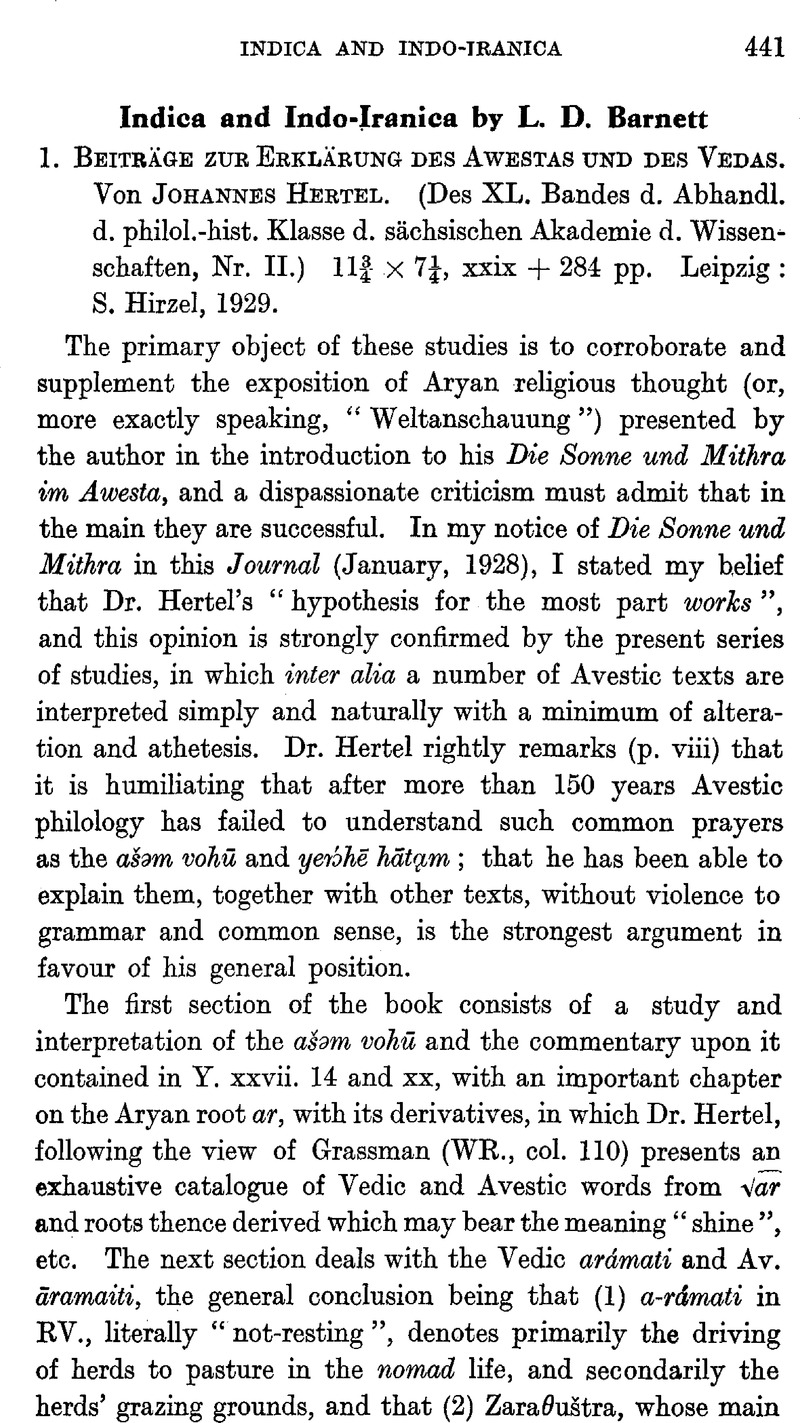No CrossRef data available.
Published online by Cambridge University Press: 15 March 2011

Page 442 note 1 According to Dr. Hertel's view, as Zaraθuštra had declared a war of reason and economic utility against the old Aryan daēvas as powers of falsehood and mischief, but nevertheless the daēvas continued to be worshipped mutato nomine after him in his name by the Magians, the latter in a crude effort to assimilate his philosophic doctrines created a new class of deities, the am∂ša sp∂ntas, “radiant immortals,” to take the place of the daēvas or “shining ones” whose name they were bidden to abhor but whose worship they maintained. Saošyant in the Gāθās denotes Ahura Mazdāh or any being of the Ahuric order who “saves” the world by giving forth the emanation of the divine Fire or illumination; in the later Avesta it signifies (1) all who propagate the Mazdayasnian law, (2) all who believe in it and observe it, and (3) all men who belong to the Ahuric order; then, with eschatological emphasis on the future sense of the word, (4) a man of the Ahuric order in the future, (5) a mortal being of that order in the coming frašōk∂r∂ti (inasmuch as saošyant = frašōcar∂tar, “illuminator,” fraša being for *fra-xša, from √-xša, xiay); then (6) Astvat-arata, who in the ultimate victory of Light in the world is the leader of the Ahuric powers, and finally (7) his two imaginary predecessors and the six assistants assigned to him by later doctrine.
Page 442 note 2 Thus I venture to doubt the suggested identification of Pūṣán with the moon (p. 89) and of the Fravašis with the stars (p. 191).